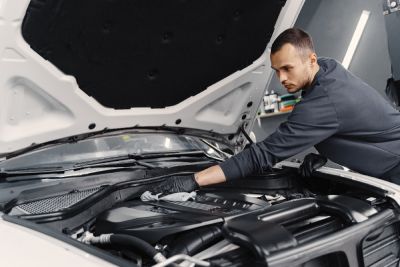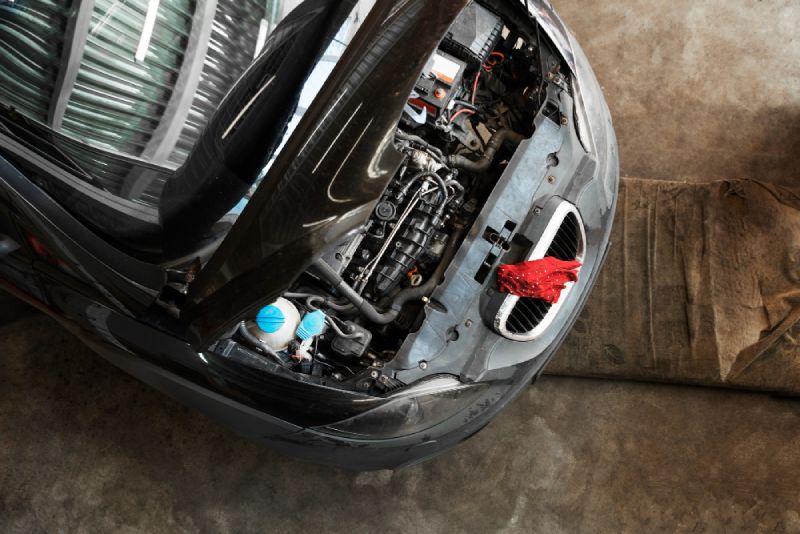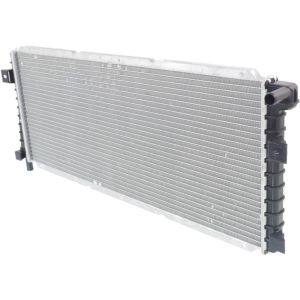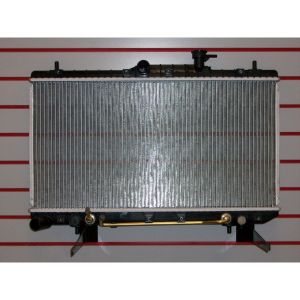Engines generate extreme heat every time they run. Without an efficient system to manage this energy, parts expand beyond tolerance, gaskets fail, and performance drops sharply.
The radiator prevents this by acting as the core of the cooling system. It absorbs excess heat from the coolant, disperses it into the air, and ensures that the engine remains within its safe operating zone.
Key Takeaways:
- The radiator is the main heat management unit in a car's cooling system.
- It transfers heat from the coolant into the air through fins and airflow.
- Stable engine temperature improves efficiency, lubrication, and emissions.
- Recognizing early failure signs protects the engine from costly damage.
- Proper maintenance extends radiator lifespan and safeguards performance.
By understanding how the radiator functions and how it connects with the wider cooling system, drivers can make smarter maintenance decisions and prevent expensive engine repairs.
Why is Your Vehicle Cooling System Important?
Every combustion cycle inside the engine generates thousands of degrees of heat. Much of this energy escapes through the exhaust system, but a significant portion stays trapped within the engine block and cylinder head. Without cooling intervention, this trapped heat leads to warped metals and lubrication failure.
The cooling system exists to manage this constant thermal load. It balances quick warm-up after ignition with stable, long-term operating temperatures. A well-maintained cooling system ensures the engine delivers consistent fuel efficiency, strong performance, and reduced emissions.
Within this network, the radiator plays the primary role of rejecting heat into the atmosphere, functioning as the system's pressure valve against thermal stress.

Understanding the Cooling System
Components of the cooling system
A modern automotive cooling system is a closed loop designed for efficiency and durability.
It includes several key parts that interact constantly:
- Radiator: The central heat exchanger where hot coolant loses its energy.
- Water pump: A circulation device that drives coolant through the engine and radiator.
- Thermostat: A temperature-sensitive valve that regulates coolant flow to maintain consistency.
- Cooling fan: A forced-air unit that ensures airflow when natural motion is insufficient.
- Hoses and clamps: Flexible connectors that carry coolant between components.
- Coolant fluid: A specialized liquid blend that resists boiling, freezing, and corrosion.
Each part depends on the others, creating a system where efficiency relies on balance and synchronization.
The relationship between the radiator and other components
The radiator cannot function independently. The water pump must push coolant through it at the correct rate, the thermostat must open to allow hot liquid to enter, and the fan must provide airflow during idle or slow movement.
If any of these components underperforms, the radiator cannot complete its job. For instance, a failing thermostat may trap coolant in the engine, while a weak fan limits heat dissipation at standstill. This interconnectedness is why mechanics evaluate the full cooling loop when diagnosing overheating issues.
What is the Function of the Car Radiator?
Heat exchange process
The radiator operates on simple thermal physics. Hot coolant enters its upper tank, flows through narrow tubes, and passes across thin metal fins. These fins increase surface area dramatically, allowing ambient air to absorb heat efficiently. As coolant cools, it collects in the lower tank and reenters the engine at a safe temperature.
This process runs continuously while the engine operates. The efficiency of the fins, the cleanliness of the tubes, and the consistency of airflow all influence how well the radiator exchanges heat.
Role in maintaining optimal engine temperature
Engines are engineered to operate best within a narrow thermal window, usually between 195 and 220 degrees Fahrenheit. At this temperature, oil viscosity remains ideal, combustion efficiency peaks, and emission control systems function correctly.
The radiator ensures coolant stays within this band. If it cools too little, overheating occurs. If it cools too much, the engine runs inefficiently, consuming more fuel and generating excess wear. By stabilizing conditions, the radiator keeps the engine in its design zone.
How Does the Car Radiator Work?
The radiator's cycle begins as the water pump pushes hot coolant from the engine block into the upper radiator tank. The liquid then spreads into a series of tubes connected to thin fins that create a wide exposure area.
Air moving across the grille, supplemented by the cooling fan, strips heat from the fins. Once cooled, the liquid collects in the bottom tank and returns to the engine.
This cycle repeats as long as the engine runs. The thermostat serves as a gatekeeper, delaying coolant circulation until the engine reaches its designed operating temperature. By combining natural airflow from driving speed with fan assistance at idle, the radiator ensures performance remains stable in both highway and urban environments.
Signs of a Failing Car Radiator
A radiator that begins to fail often gives measurable warning signs long before complete breakdown. Drivers should look for coolant puddles beneath the car, a temperature gauge rising above normal, or visible steam from under the hood.
Discolored coolant or sludge inside the filler neck suggests internal corrosion. In some cases, reduced cabin heat output indicates coolant circulation problems, since the heater core shares flow with the radiator.
Recognizing these signals early helps drivers address the issue with a repair or replacement before the damage extends to head gaskets or cylinder walls. Waiting until the temperature gauge spikes risks catastrophic failure that costs far more than proactive maintenance.
How to Maintain Your Car Radiator?
Proper radiator care protects the entire cooling system. Maintenance begins with routine checks of coolant level and color. A clean, properly mixed coolant blend resists corrosion and scale buildup. Replacing fluid at manufacturer-recommended intervals removes deposits that restrict tube flow.
External inspection matters equally. Dirt, leaves, and insects lodged in the fins reduce airflow and weaken heat transfer. Gentle cleaning with water or compressed air restores surface efficiency. Mechanics also stress the importance of inspecting hoses, clamps, and the radiator cap, since pressure loss anywhere in the system reduces performance.
For vehicles driven in extreme climates, a professional flush service provides additional protection by eliminating buildup in hidden areas. Consistent care ensures the radiator functions as intended, protecting the engine for the long term.
Final Thoughts
Answering the question of what the radiator does for a car reveals its crucial role in managing thermal balance. It regulates heat transfer, ensures stable engine operation, and works in concert with pumps, thermostats, and fans to create a resilient cooling cycle.
By understanding its operation, drivers can recognize early signs of trouble and apply the right maintenance strategies.
When replacement becomes necessary, Painted Auto Body Parts offers a trusted source for high-quality radiators suited to diverse vehicle models. With reliable availability and efficient shipping, it provides the confidence that drivers need when restoring a critical engine safeguard.
FAQs
Why does coolant color matter when checking radiator health?
- Coolant color indicates chemical stability. A shift to brown or milky appearance signals corrosion, contamination, or mixing with oil, which demands immediate attention.
Can a clogged radiator be cleaned at home?
- Light debris on the exterior can be cleaned carefully, but internal blockages require professional flushing or replacement to restore full efficiency.
Does radiator size affect engine performance?
- Yes. Larger or more efficient radiators handle higher heat loads, which benefits performance vehicles, towing applications, and engines operating under heavy stress.








